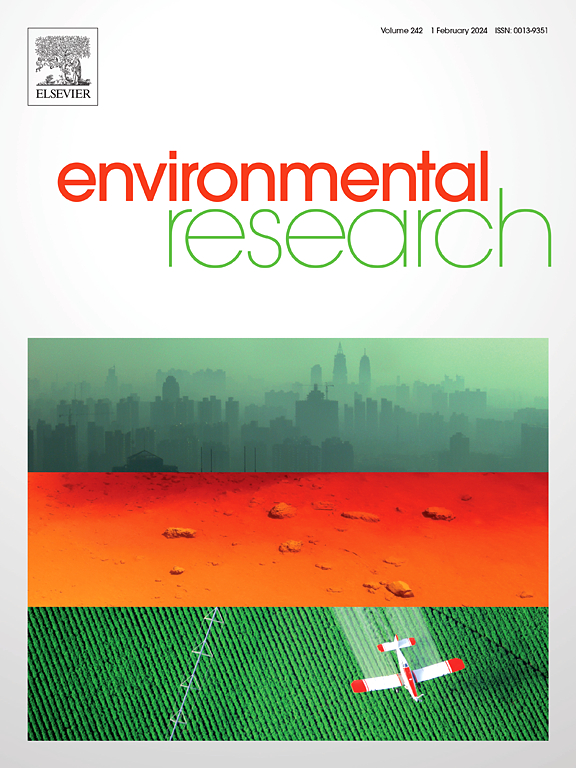淡水龟(龟纲,龟科)不同器官的生化生物标志物谱揭示了人类化水体环境对污染物的影响。
IF 7.7
2区 环境科学与生态学
Q1 ENVIRONMENTAL SCIENCES
引用次数: 0
摘要
水生生物经常接触各种化学物质,这些化学物质的个别成分可能在生物体内产生不同的反应和/或相互作用导致毒性作用。“Geoffroy’s side-neck turtle”,Schweigger, 1812)是南美洲特有的一种淡水龟,通常出现在污染的河流中,这些河流穿过城市地区,接收家庭和工业废水。为了评价人类水生环境下P. geoffroanus不同器官(肝、心、肺、胰腺、小肠和大肠)生物化学标志物谱的变化,我们分析了外源生物转化酶、抗氧化酶和脂质过氧化水平的响应。还评估了乙酰胆碱酯酶(AChE)活性,以检查其神经毒性作用。结果表明,一条高度人为化的河流水质较差,影响了自由生活淡水龟的生化参数。与参考地点(养殖场)的动物相比,污染地点的动物表现出更高的生物转化活性、抗氧化反应和脂质过氧化水平,表明氧化应激。胰腺乙酰胆碱酯酶活性降低。特定器官中不同生物标志物的改变表明该物种不同器官的易感性存在差异。这些数据有助于更好地了解这些动物对环境污染物的反应,表明该物种是生态毒理学研究的良好哨兵生物。本文章由计算机程序翻译,如有差异,请以英文原文为准。
Biochemical biomarker profiles of different organs of Phrynops geoffroanus freshwater turtle (Testudines, Chelidae) reveal pollutant effects from an anthropized aquatic environment
Aquatic organisms are often exposed to various chemicals, whose individual components are likely to produce different responses within the organisms and/or interact leading to toxic effects. The Phrynops geoffroanus species (“Geoffroy's side-necked turtle”, Schweigger, 1812), a freshwater turtle endemic of South America, is commonly found in polluted rivers that cross the urban area and receive domestic and industrial wastewater effluents. In order to evaluate changes in biochemical biomarker profiles in different organs (liver, heart, lung, pancreas, small and large intestines) of P. geoffroanus from an anthropized aquatic environment, we analyzed the responses of enzymes involved in xenobiotic biotransformation, antioxidant enzymes, and lipid peroxidation levels. Acetylcholinesterase (AChE) activity was also assessed to check for neurotoxic effects. Results revealed that the poor water quality of a highly anthropized stream perturbed the biochemical parameters of free-living freshwater turtles. Compared to animals from the reference site (breeding farm), those from the polluted site presented increased biotransformation activity, antioxidant responses, and lipid peroxidation levels, indicative of oxidative stress. AChE activity was decreased in the pancreas. Alterations of different biomarkers in specific organs indicated differences in susceptibility among different organs of this species. These data contribute to a better understanding of how these animals respond to environmental pollutants, suggesting this species as good sentinel organisms for ecotoxicological studies.
求助全文
通过发布文献求助,成功后即可免费获取论文全文。
去求助
来源期刊

Environmental Research
环境科学-公共卫生、环境卫生与职业卫生
CiteScore
12.60
自引率
8.40%
发文量
2480
审稿时长
4.7 months
期刊介绍:
The Environmental Research journal presents a broad range of interdisciplinary research, focused on addressing worldwide environmental concerns and featuring innovative findings. Our publication strives to explore relevant anthropogenic issues across various environmental sectors, showcasing practical applications in real-life settings.
 求助内容:
求助内容: 应助结果提醒方式:
应助结果提醒方式:


